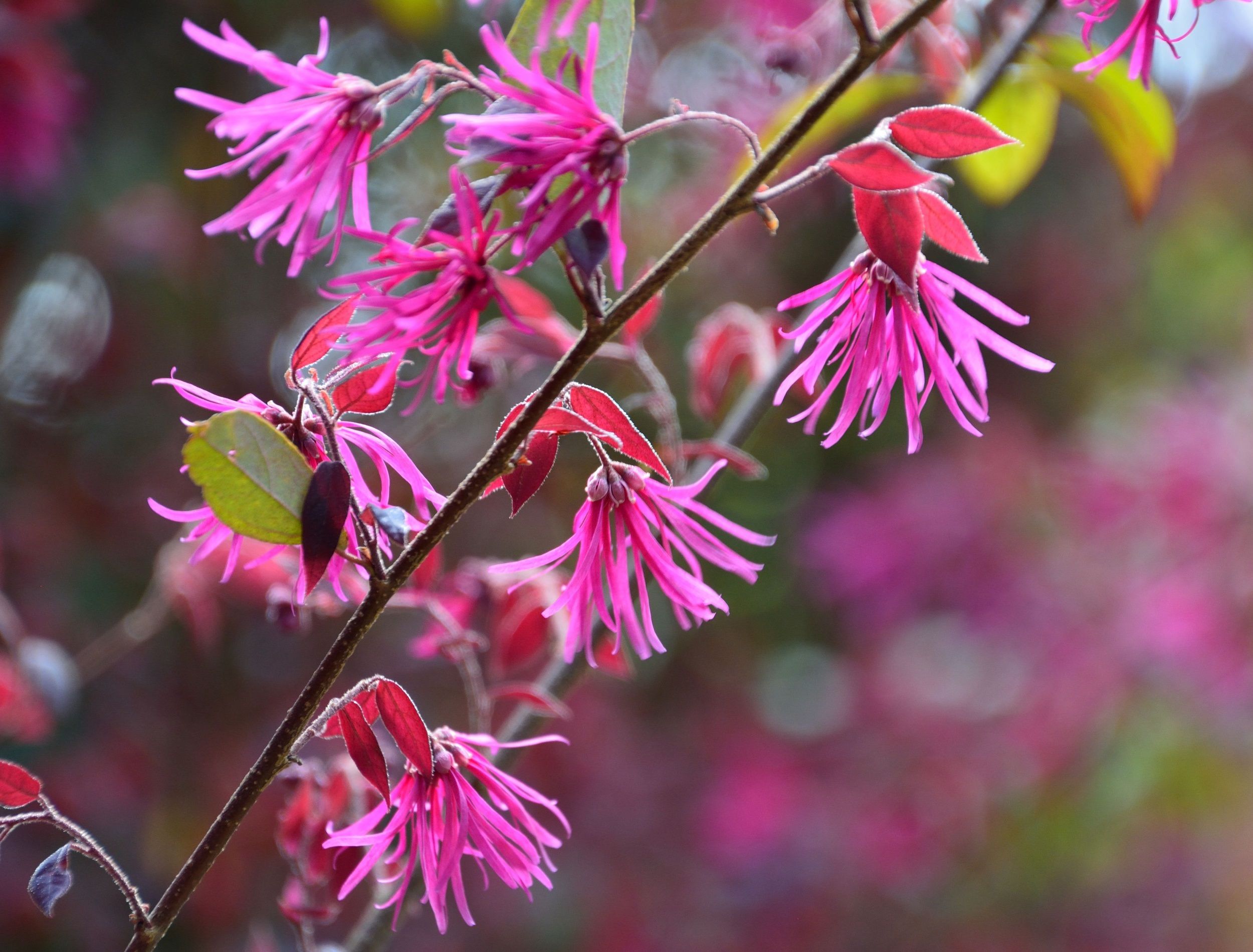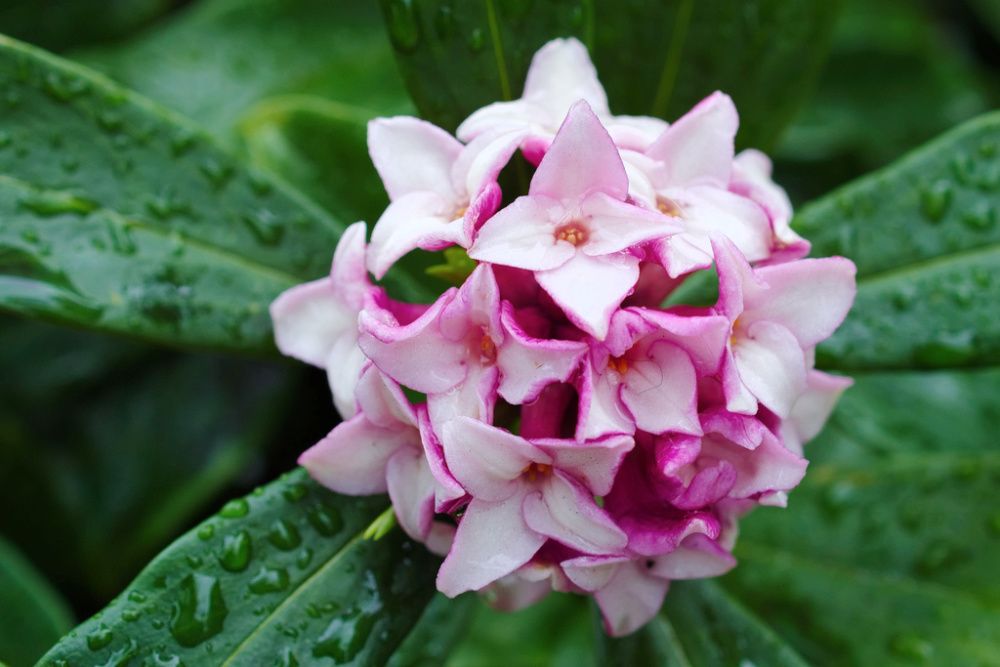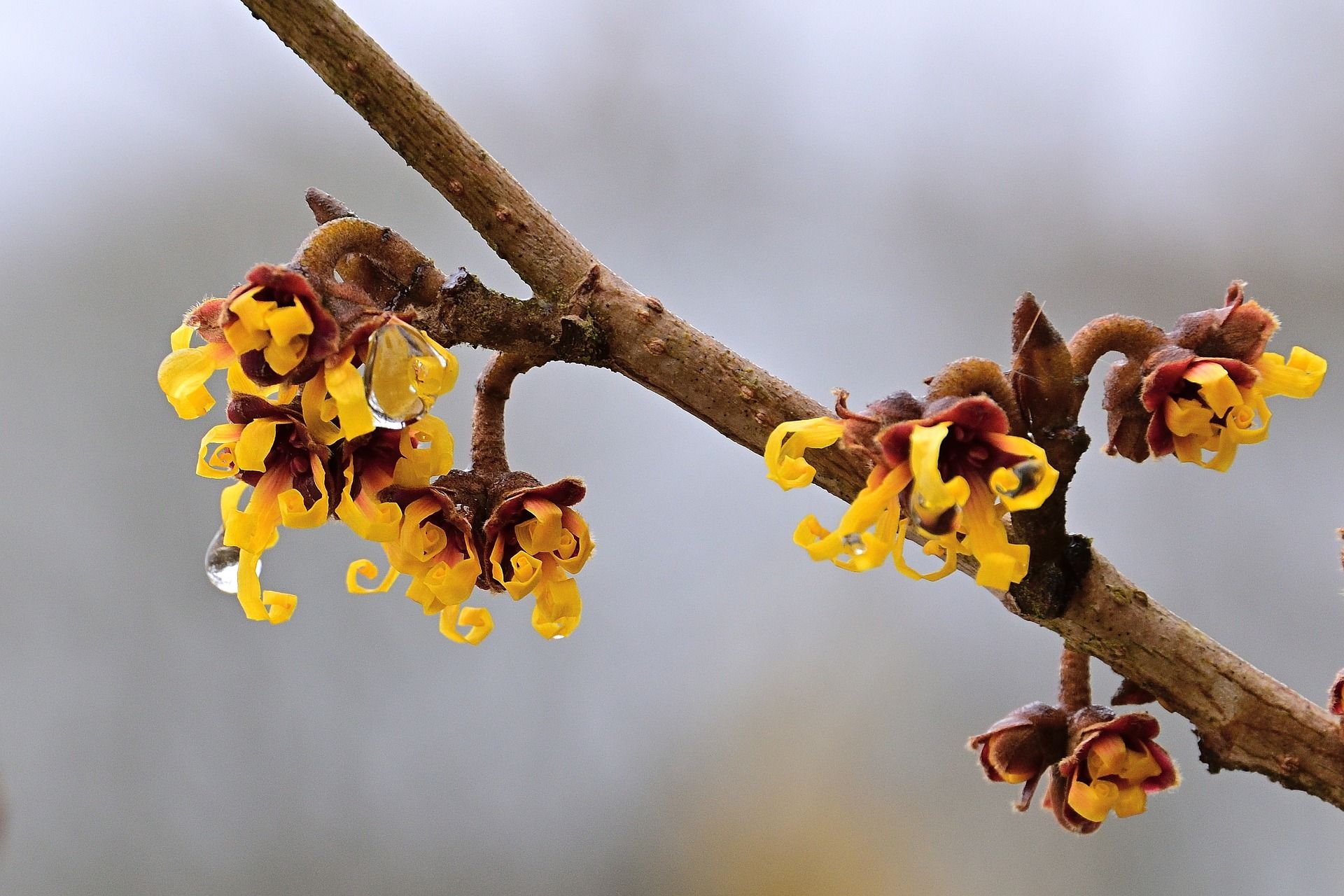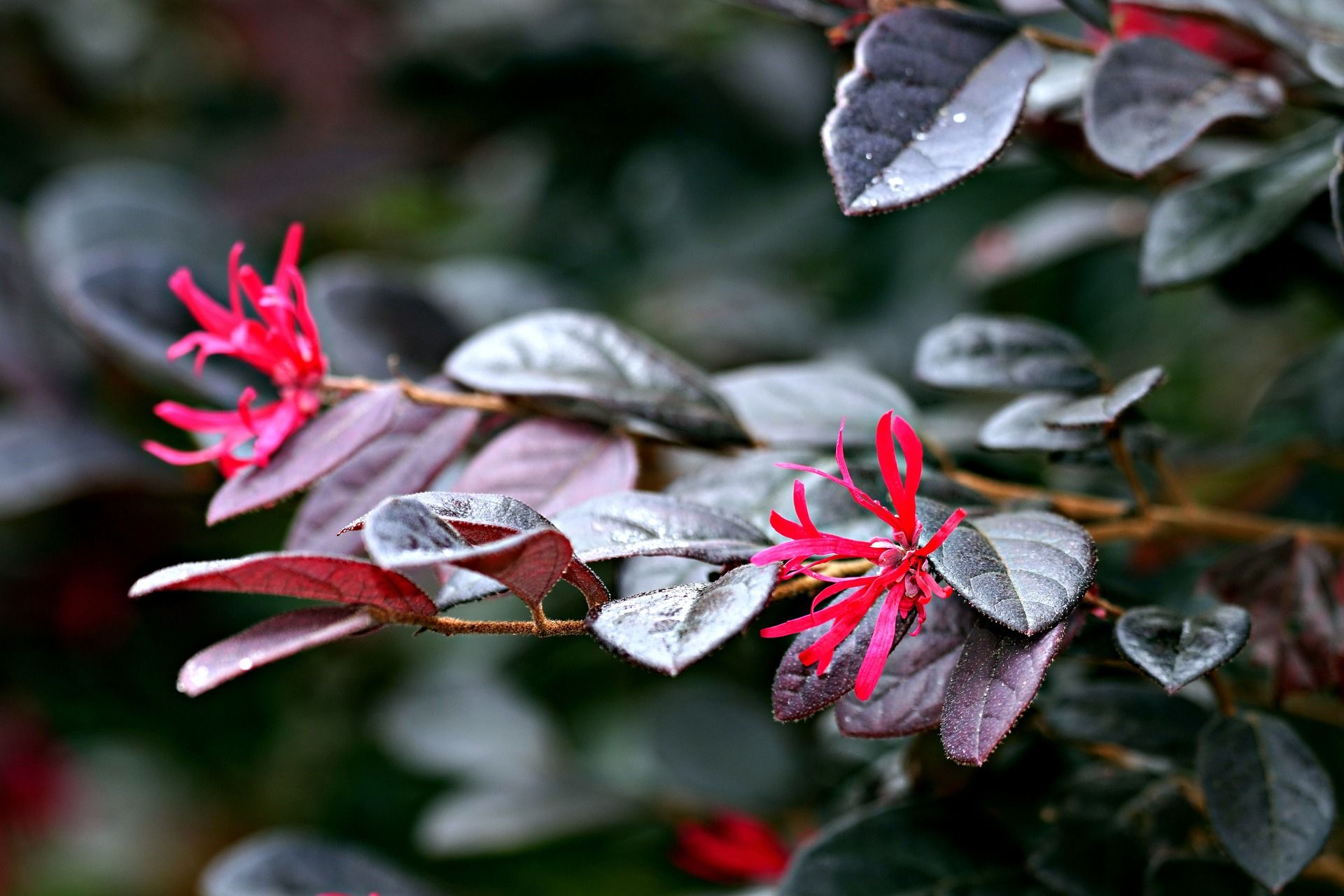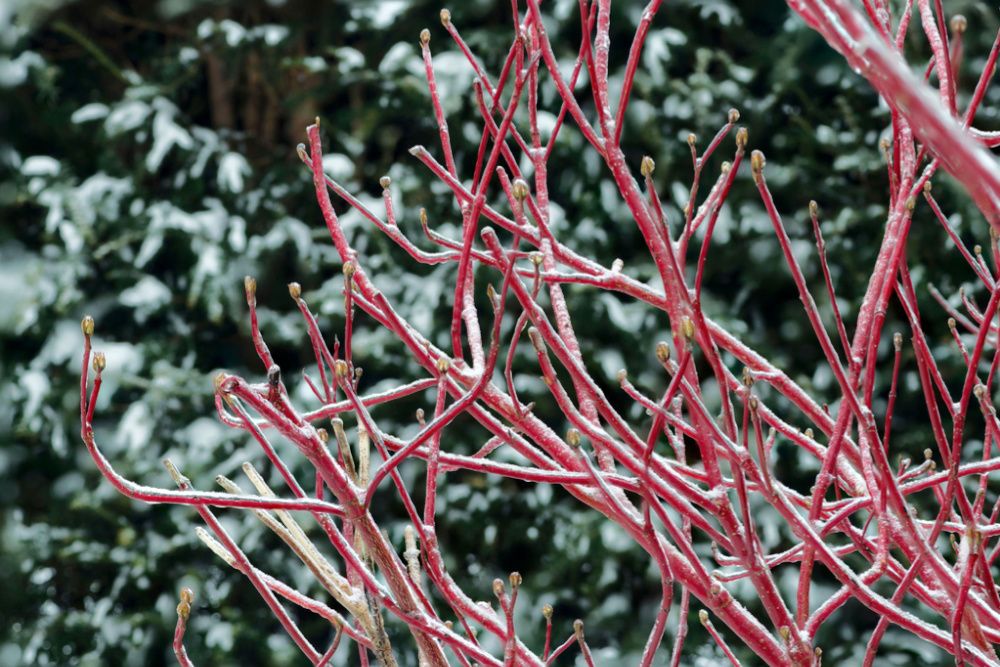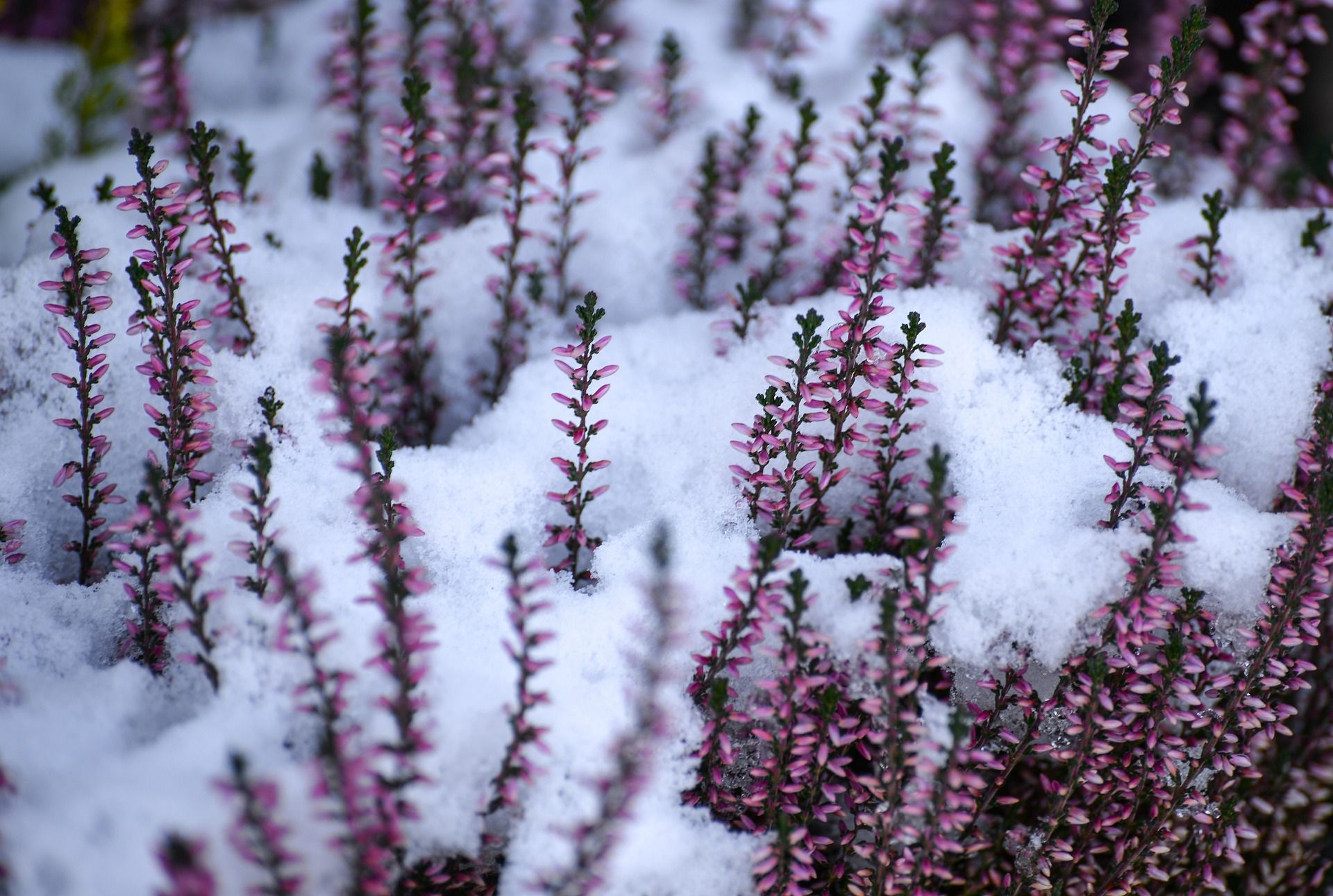It's no secret that winter brings beautiful sprinklings of snow and joyous celebrations. With that said, harsh weather and cloudy skies, paired with a bare garden, can make things feel bleak. If your landscape lacks winter-hardy plants, consider planting one of these five colorful shrubs to create a splendid winter landscape.
Not sure where to start when it comes to livening up your winter garden? No problem! Whether your space needs glossy green leaves, delicate and unique branches, or show-stopping florals, there's something for everyone. Learn all the details about these five different shrubs so you can decide which colors, styles, and care requirements will suit your space best.
Winter Daphne
Image credits: kkb3 via Shutterstock
Daphne odora 'Aureomarginata,' otherwise known as winter daphne, is a flowering evergreen shrub that can grow up to 5 feet in height and width. In winter, the plant boasts gorgeous foliage, with long narrow green leaves edged with a creamy color. The shrub also flowers in winter, developing purple buds and petite pink and lavender star-shaped flowers.
Hardy in zones 7 to 9, the shrub requires well-drained soil and partial shade or filtered sunlight. Winter Daphne does best located beneath a tree, receiving water when the soil is dry. While extremely cold temperatures can cause the plant to drop all its foliage, it is hardy and will regrow come spring.
Witch Hazel
Image credits: jggrz via Pixabay
Witch hazel, or Hamamelis virginiana, is a tall perennial shrub or small tree that grows up to 35 feet in height. With that said, the plants commonly reach 10 to 15 feet tall. The crooked, irregular branches spread outwards from the crown, creating an inverted triangular shape.
The plant blooms from September through December with petals in shades of yellow, orange, brown, and green. The flowers are exceptionally unique, featuring long, curled petals that look wrinkled or crumpled. The rich color is ideal for adding to your fall and winter landscape. Its unique branches continue to wow throughout late winter and early spring.
Witch hazel grows best in partial shade with moist, well-drained soil. Avoid extreme dry conditions by watering regularly and keeping the plant out of direct sunlight. As a bonus, there's basically no need to prune! A hardy pruning once every ten years will suffice.
Fringe Flower
Image credits: ignartonosbg via Pixabay
An evergreen member of the witch hazel family, fringe flower, or Loropetalum chinense, grows about 6 to 12 feet tall and spreads 6 to 10 feet wide. It requires very little attention, needing supplemental watering only in dry conditions. Also, prune when the branches spread further than you would like. Plant in full sun to partial shade in a well-draining, loamy soil.
The plant develops small clusters of string-like petals in late winter to early spring. The flowers are a deep fuchsia or creamy white depending on the variety. Fringe flower plants continue to sporadically bloom throughout the summer and fall, while the deep green leaves remain for year-round color.
Red Twig Dogwood
Image credits: Mark Heighes via Shutterstock
Cornus sericea, also known as red twig dogwood, is a perennial deciduous shrub that grows between 6 to 12 feet tall and 7 to 10 feet wide. The plant blooms creamy white flowers from May to June. The blossoms grow in clusters from broad green leaves, creating a fluffy and ethereal shape.
The plant also grows clusters of pea-sized white berries that add brightness during the fall season. In winter, the plant becomes bare and the long and irregular red twigs add plenty of interest to a snowy white backdrop. Plant in fertile, consistently moist soil with partial shade for best growth.
Winter Heather
Image credits: wal_172619 via Pixabay
Winter Heather, or Erica carnea, is a low evergreen shrub that can also grow as ground cover. There are over 100 cultivars, with colors ranging from white to pink and purple.
The bloom time varies depending on the species. However, most flower in early spring or fall, growing in an upwards direction. The 'Sherwood Pink' variety produces pure pink blooms in a one-sided raceme (flower clusters) from January through March for a pop of color in a winter wonderland.
Plant in sandy, well-drained soil with full sun to partial shade. The shrub also performs well in raised garden beds or containers because they are generally well-draining. They don't tolerate too much heat, so a location with cool summer weather and afternoon shade is best.
Remember to prune immediately after flowering in the spring and water regularly in warm weather to encourage new growth.
Keep It Bright!
Though winter can make things feel a little lackluster, you can add color and depth back into your garden with these five colorful winter shrubs. They are generally easy to care for and do best in low or filtered light locations, making them perfect for lining fences, planting beneath trees, or adding along the walls of your home.
Do you know of any colorful winter shrubs? Share in the comments below!

